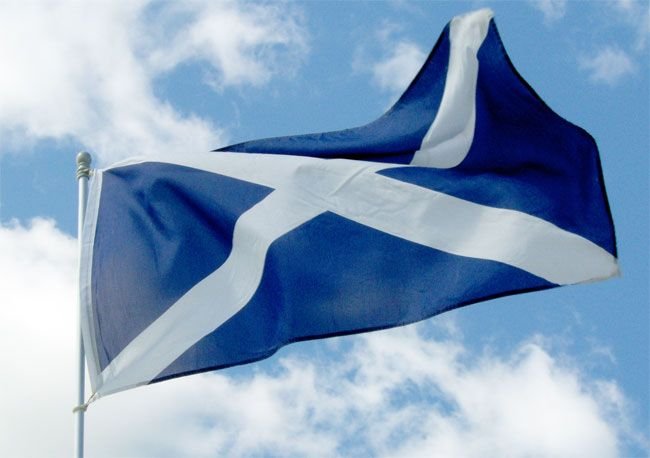History Of The Saltire – Scotland’s National Flag And World’s Oldest Sovereign Flag
AncientPages.com - Most people have seen the Saltire, Scotland's national flag. With its symbol as a diagonal cross, the blue flag is easily recognizable. Not everyone knows the exciting history of the Saltire, the world's oldest sovereign flag.
The history of the Saltire can be traced to an ancient legend and St Andrew, the patron saint of Scotland.
It is believed that in 832 AD, a Pictish army under King Angus MacFergus, High King of Alba, along with a force of Scots under Eochaidh, King of Dalriada, came up against a Northumbrian force under King Aethelstan of East Anglia in Lothian.
The Pictish army had little chance of winning the battle. Superior numbers surrounded them, and the soldiers prayed for assistance. That night Saint Andrew, who was martyred on a Saltire-shaped cross, appeared to Angus and assured him of victory. The following day something extraordinary happened. When the two forces prepared for the battle, an image of a white cross suddenly appeared in the sky.
The battle site is known as Athelstanford after the Northumbrian leader, who was killed in the battle. The image encouraged the Picts and gave them strength and courage. The Northumbrian army became terrified and fled in panic. From then onwards, the Saltire has been used as Scotland's national flag.
The Saltire is Scotland's national flag
Today, the Saltire is also referred to as St Andrew's cross. St Andrew was an agile and hardy Galilean fisherman whose name means Strong and had good social skills. He brought the first foreigners to meet Jesus and shamed a large crowd into sharing their food with the people beside them. As one of the disciples of Christ, he became a missionary in Asia and Greece before the Romans crucified him at Patras in 69 AD.
Legend tells that St. Andrew felt unworthy to be crucified on a cross similar to Jesus and demanded to die on an X-shaped cross instead.
St Andrew was a Galilean fisherman - Image via Saint Andrew
His remains were interred in Constantinople but later removed by St Rule (Saint Regulus or Saint Rule (Old Irish: Riagal), a legendary 4th-century monk or bishop of Patras, Greece, who in AD 345 is said to have fled to Scotland.
St Rule was told to take the remains to the 'ends of the earth' for safekeeping. He removed a tooth, arm bone, kneecap, and some fingers from the tomb and set off for the most remote place he could find. That place was on Scotland's east coast and has become known as St Andrews.
The relics were later destroyed during the Reformation, and most of the other remains were stolen from Constantinople and moved to Amalfi in Italy. Some of these relics finally came to Scotland in 1879 and 1969.
It is the story of how the Saltire became the flag of Scotland.
To have Saint Andrew as Scotland's Patron gave the country several advantages. Since St Andrew was the brother of Saint Peter, founder of the Church, the Scots were able to appeal to the Pope in 1320 (The Declaration of Arbroath) for protection against the attempts of English kings to conquer the Scots.
Traditionally, Scots also claimed that they descended from the Scythians, who lived on the shores of the Black Sea in what is now Romania and Bulgaria and were later converted by Saint Andrew.
The Saltire was an important religious symbol. It was worn by Scottish crusaders to the Holy Land and incorporated into their coats of arms. Many Scottish noble families adopted the Saltire this way; Bruces, Johnstones, Kirkpatrics, and some Norman families.
In the 1707 Act of Union, Scotland and England became the United Kingdom. A new flag was designed that united the crosses of St Andrew and St George.
The memory of St Andrew is still very much alive. Scotland celebrates St Andrew on 30 November every year. St Andrew has been the patron saint of Scotland for over 1,000 years.
He is also the patron saint of Romania and Russia.
Copyright © AncientPages.com All rights reserved. This material may not be published, broadcast, rewritten or redistributed in whole or part without the express written permission of AncientPages.com
Expand for referencesMore From Ancient Pages
-
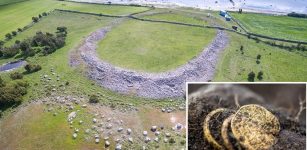 Gold Coins Shed Light On The Mystery Of Sandby Borg And Massacre On The Swedish Island
Archaeology | Oct 16, 2017
Gold Coins Shed Light On The Mystery Of Sandby Borg And Massacre On The Swedish Island
Archaeology | Oct 16, 2017 -
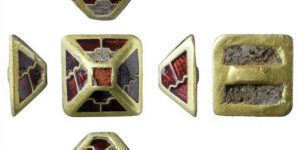 Magnificent ‘Sword Pyramid’ Lost By A Sutton Hoo-Era Lord Discovered In Norfolk
Archaeology | Aug 21, 2021
Magnificent ‘Sword Pyramid’ Lost By A Sutton Hoo-Era Lord Discovered In Norfolk
Archaeology | Aug 21, 2021 -
 Ancient Bizarre Experiments Conducted In Mysterious Underground Temple
Featured Stories | Jun 28, 2018
Ancient Bizarre Experiments Conducted In Mysterious Underground Temple
Featured Stories | Jun 28, 2018 -
 Meidum ‘Collapsed’ Pyramid Of Great Builder Pharaoh Snefru
Featured Stories | Jan 2, 2017
Meidum ‘Collapsed’ Pyramid Of Great Builder Pharaoh Snefru
Featured Stories | Jan 2, 2017 -
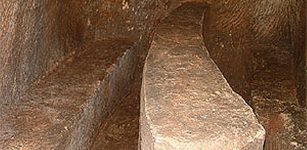 Mystery Of Gilmerton Cove: Underground Maze Of Caves, Passages And Tunnels
Featured Stories | Dec 22, 2015
Mystery Of Gilmerton Cove: Underground Maze Of Caves, Passages And Tunnels
Featured Stories | Dec 22, 2015 -
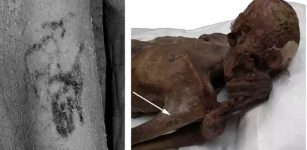 World’s Oldest Tattoos Discovered On Egyptian Mummies Re-Write History Of Tattoos
Archaeology | Mar 2, 2018
World’s Oldest Tattoos Discovered On Egyptian Mummies Re-Write History Of Tattoos
Archaeology | Mar 2, 2018 -
 Hiidenkirnut: Spectacular Millennia-Old Devil’s Churns In Finland
Featured Stories | Jan 16, 2017
Hiidenkirnut: Spectacular Millennia-Old Devil’s Churns In Finland
Featured Stories | Jan 16, 2017 -
 Vijayanagara – ‘City Of Devas – Shining Ones’ – Place Where Mythology And History Coexist
Civilizations | Jun 21, 2015
Vijayanagara – ‘City Of Devas – Shining Ones’ – Place Where Mythology And History Coexist
Civilizations | Jun 21, 2015 -
 On This Day In History: Mount Fuji Erupted – On Dec 16, 1707
News | Dec 16, 2016
On This Day In History: Mount Fuji Erupted – On Dec 16, 1707
News | Dec 16, 2016 -
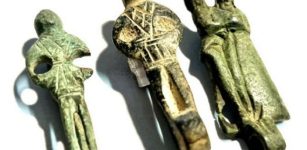 Exceptionally Rare Medieval Loop For Hanging Keys Found Near Kamień Pomorski, Poland
Archaeology | Mar 19, 2024
Exceptionally Rare Medieval Loop For Hanging Keys Found Near Kamień Pomorski, Poland
Archaeology | Mar 19, 2024 -
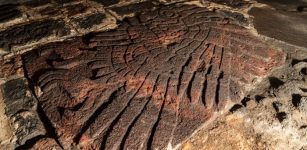 Huge Golden Eagle Relief Made By The Aztecs Discovered At Tenochtitlan
Archaeology | Feb 3, 2021
Huge Golden Eagle Relief Made By The Aztecs Discovered At Tenochtitlan
Archaeology | Feb 3, 2021 -
 Early Humans Were Probably Driven To Extinction By Climate Change- Study Suggests
Civilizations | Oct 15, 2020
Early Humans Were Probably Driven To Extinction By Climate Change- Study Suggests
Civilizations | Oct 15, 2020 -
 Mysterious Advanced Underground Civilization And A Secret Society – Technology, History, Language And Goals – Part 2
Civilizations | Apr 23, 2018
Mysterious Advanced Underground Civilization And A Secret Society – Technology, History, Language And Goals – Part 2
Civilizations | Apr 23, 2018 -
 Ancient City Filled With Treasures May Be Hidden Underground In South America
Featured Stories | Jul 20, 2018
Ancient City Filled With Treasures May Be Hidden Underground In South America
Featured Stories | Jul 20, 2018 -
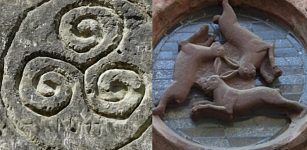 Triskelion – Millennia Old Traditional Symbol Used In Many Cultures Around The World
Ancient Symbols | Dec 13, 2018
Triskelion – Millennia Old Traditional Symbol Used In Many Cultures Around The World
Ancient Symbols | Dec 13, 2018 -
 Okanagan Indians’ Myth Of A Lost Island Paradise Inhabited By White Giants – Are Their Descendants Living In British Columbia?
Featured Stories | Dec 29, 2020
Okanagan Indians’ Myth Of A Lost Island Paradise Inhabited By White Giants – Are Their Descendants Living In British Columbia?
Featured Stories | Dec 29, 2020 -
 Evidence People Lived In Australian Desert 50,000 Years Earlier Than Previously Thought
Archaeology | Sep 22, 2018
Evidence People Lived In Australian Desert 50,000 Years Earlier Than Previously Thought
Archaeology | Sep 22, 2018 -
 What Fossils Reveal About Hybridization Of Early Humans – History Of Humankind Is More Complex Than Previously Thought
Archaeology | Sep 6, 2022
What Fossils Reveal About Hybridization Of Early Humans – History Of Humankind Is More Complex Than Previously Thought
Archaeology | Sep 6, 2022 -
 Ghostly Appearance Of Weird Ancient City Suspended In The Sky Witnessed By Many People
Featured Stories | Jul 9, 2019
Ghostly Appearance Of Weird Ancient City Suspended In The Sky Witnessed By Many People
Featured Stories | Jul 9, 2019 -
 Posca: ‘Wine Of The People’ Was Popular In Ancient Rome And Greece
Ancient History Facts | Sep 26, 2018
Posca: ‘Wine Of The People’ Was Popular In Ancient Rome And Greece
Ancient History Facts | Sep 26, 2018


